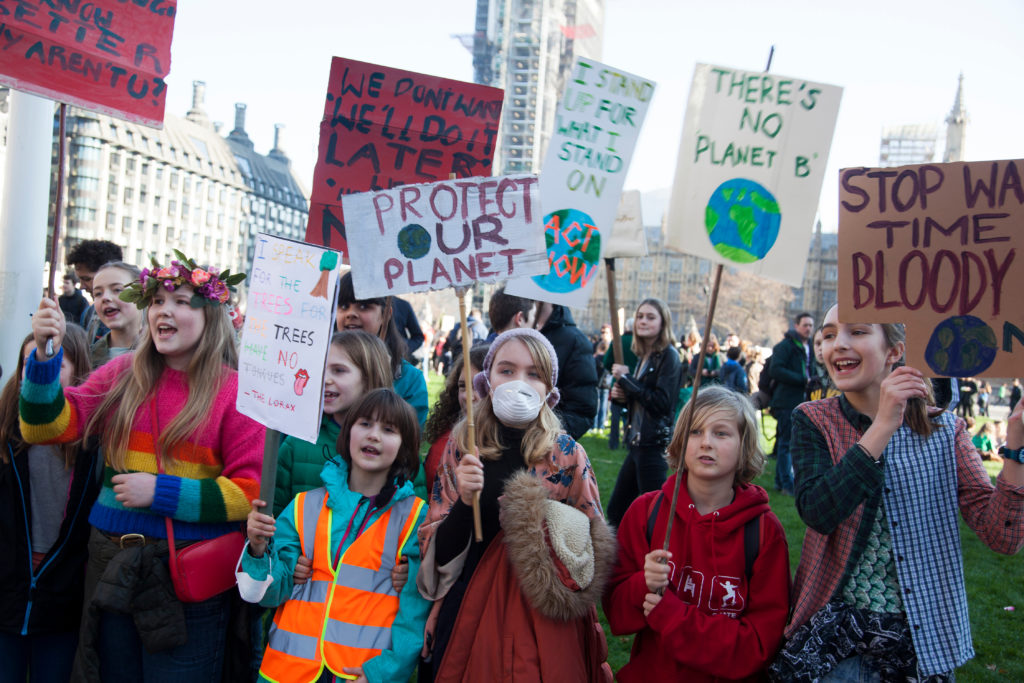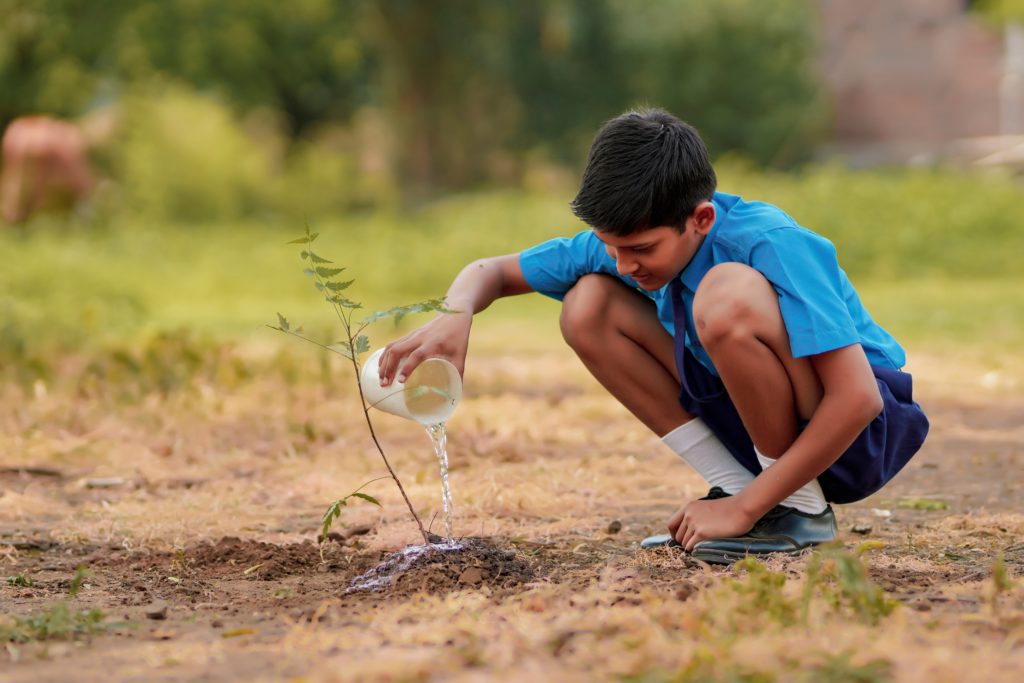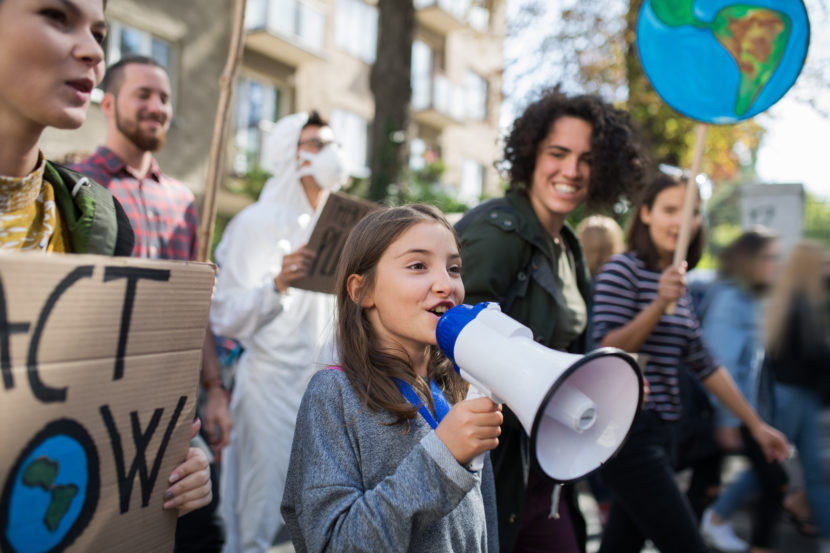The climate crisis is changing the world as we know it. Even if children are the least responsible for the climate crisis, they are at the forefront of fighting against this crisis which is most than all a children’s rights crisis. With the publication of General Comment No. 26 (GC26), the United Nations Committee on the Rights of the Child has listened to the calls of children and young people, and it has adopted some measures to call States to fight against the climate crisis along with its national children citizens.
“Our house is on fire”: the effects of climate change
It was the slogan proclaimed by Greta Thunberg in her powerful speech to world leaders at Davos in 2019 (Friis, 2023). Indeed, the climate crisis is changing the world as we know it. The scorching summer of 2023 will be remembered as the hottest on record. Italy sweltered at a scorching 48 degrees Celsius, while wildfires continued to spread across Southern Europe.
The northern Atlantic’s temperature has exceeded scientists’ expectations, and the planet is reeling from the brutal impacts of heat, leading to the tragic loss of millions of lives (Friis, 2023). More recently, in September 2023, climate change has shown its harmful effects in Greece and Libya, where the Daniel storm caused thousands of deaths and wounded (Niranjan, 2023).
Children are the least responsible for the climate crisis but suffer most from its consequences. Every year 1.7 million children under the age of five lose their lives due to avoidable environmental damage (UNICEF, 2023).
Millions more are being forced to leave their homes, missing out on school and suffering from disease (General Comment, General Comment No. 26, 2023). Moreover, research shows that the millions of children born in the last year will face on average 2-7 times more extreme weather events than their grandparents – that means more heatwaves, flooding, droughts, crop failures and wildfires (Save the Children, 2021).
The impact of climate change on children’s mental health: the “eco-anxiety”
The climate crisis has also an impact on the mental health of children and young people. It is called “eco-anxiety” and it is the chronic fear of environmental doom which affects young people. Although not yet considered a diagnosable condition, the recognition of eco-anxiety and its complex psychological effects is on the rise (Gregory, 2021).
According to a survey conducted by a group of child psychiatrists in England in 2020, more than half (57 percent) (47 of the 82 who replied) of the children and young people involved felt distressed about the climate crisis and the state of the environment. Moreover, a recent international survey of climate anxiety in young people aged 16 to 25 showed that the psychological burdens of the climate crisis were profoundly affecting huge numbers of these young people around the world (Gregory, 2021). Similar global studies also show that some children even struggle to sleep due to their concerns (Friis, 2023).
Research offered insights into how young people’s emotions were linked with their feelings of betrayal and abandonment by governments and adults. Governments were seen as failing to respond adequately, leaving young people with “no future” and “humanity doomed” (Gregory, 2021). The feeling of powerlessness is also fuelled by the fact that children and young people are under-represented in all decision-making processes on environmental policy (UNICEF, 2023).
Around the world, children are taking bold action to stand up for their rights and for the climate. They have organised climate strikes, school strikes, petitions, and campaigns to demand action from their governments. It is essential that adults give children a seat at the table and listen to their innovative solutions to tackling the climate crisis (Save the Children, 2021).
Why was GC26 needed?

Children and young people worldwide have been calling on governments to take action on the environmental crisis, one of the greatest threats to children’s rights globally (General Comment, General Comment No. 26, 2023). The United Nations Committee on the Rights of the Child has listened to the calls of children and young people and, in August 2023, it published the General Comment on Children’s Rights and the Environment with a Special Focus on Climate Change (General Comment No. 26).
“Children worldwide have been leading the fight against climate change; calling on their governments and corporations to take action to protect the planet and their future. With its General Comment No. 26, the Committee on the Rights of the Child not only echoes and amplifies children’s voices, but also clearly defines the rights of children in relation to the environment that States Parties should respect, protect and fulfil, collectively and urgently!”
– Philip Jaffé, member of the United Nations Committee on the Rights of the Child (UNICEF, 2023)
Despite the fact that general comments are only soft law in nature, they are an authoritative source of non-binding norms that interpret and add detail to the rights and obligations under the CRC (Nolan, 2023). In so doing, the General Comment provides authoritative guidance on how children’s rights are impacted by the environmental crisis and what governments must do to uphold these rights (General Comment, General Comment No. 26, 2023).
The adoption of General Comment No. 26 is the last stop of a long journey that the Committee started in September 2016 when it first focused in-depth on the issue of child rights and the environment. It was only in June 2021 that the Committee announced that its next general comment would be on children’s rights and the environment, with a special focus on climate change (Nolan, 2023). In fact, the Committee notes that “the efforts of children to draw attention to these environmental crises created the motivation and were the momentum behind the present general comment” (OHCHR, 2023).
Moreover, between 2016 and 2023, there was one particular event that played an important role in the adoption of GC26, namely, the complaints brought to the Committee by Chiara Sacchi and 15 other child complainants against five states in September 2019. Even if the complaints were deemed inadmissible, they drove home the message that the Committee needed to address the environment as a matter of urgency.
Indeed, the impact of Sacchi was acknowledged by the Chair of the Committee in an interview with the Guardian published on the day that the General Comment came out: “[Sacchi] certainly galvanised the committee’s interest in deciding to issue this general comment. The case made us so aware of how children were feeling about these issues, how strongly they were fighting to get their views across” (Nolan, 2023).
The innovations introduced by GC26
For the first time, the United Nations Committee on the Rights of the Child has explicitly affirmed the children’s right to a clean, healthy and sustainable environment, issuing a comprehensive interpretation of Member States’ obligations under the UN Convention on the Rights of the Child (CRC) (UNICEF, 2023).
General Comment No. 26 specifies that States are responsible not only for protecting children’s rights from immediate harm but also for foreseeable violations of their rights in the future due to States’ acts — or failure to act — today. Furthermore, it underlines that States can be held accountable not only for environmental harm occurring within their borders but also for the harmful impacts of environmental damage and climate change beyond their borders.
Some of the measures to be put in place include organizing the phase-out of coal, oil and natural gas and shifting to renewable energy sources, improving air quality and ensuring access to clean water, transforming industrial agriculture and fisheries to produce healthy and sustainable food, and protecting biodiversity (UNICEF, 2023).
It also makes it clear that child rights impact assessments must be undertaken for all environment-related legislation, policies and projects, regulations, budgets or other decisions. States will have to report periodically to the UN Committee on relevant progress they have made in protecting children’s environmental rights. The guidance states that children’s views must be considered in environmental decision-making and stresses the critical role of environmental education in preparing children to take action, advocate, and protect themselves from environmental harm (UNICEF, 2023).
The participation process for GC26
To ensure General Comment No.26 is representative of the diverse experiences and best interests of children globally, the United Nations Committee on the Rights of the Child has taken a collaborative, intergenerational approach to its development (General Comment, Save the Date, 2023). In fact, the Committee has received over 16,000 contributions from children representing more than 121 countries (Nolan, 2023). This has been one of the most inclusive child participation processes at the UN level to date (UNICEF, 2023).
The participation process of children has been possible thanks to the involvement of many different stakeholders, from human rights institutions, indigenous peoples’ organisations to United Nations agencies and States. Most importantly, it is being shaped by children and young people, especially from communities most impacted by the environmental crisis (CRIN, 2023).
Between December 2021 and February 2023, thousands of children, young people and adults from all across the world participated in offline and online consultations to help shape the General Comment which took place at a national, regional and local level (General Comment, Consultations, 2023). The aim of the consultations was to ensure the General Comment is informed by the voices of children and young people, and those most impacted by environmental harm and climate change, and also by calling these actors to help fill gaps in the current understanding of certain key issues and clarify difficult concepts (e.g. rights of future generations) (General Comment, Consultations, 2023).
“To me, the General Comment means worldwide change that is necessary as we move forward in fighting environmental issues and take global action in protecting our planet for our generation and the generations to come. It gives children a stronger basis in international law to enforce our rights to a healthy environment. Globally, we are seeing more action for people to protect the environment through Human Rights and GC26 forms an important part of this.”
– Āniva, a 17-year-old climate and child rights activist from the Pacific Islands was one of the child advisors (UNICEF, 2023)
Children’s views must be taken on board on climate issues
The climate crisis is a children’s rights crisis (UNICEF, 2023). It means that the effects of climate change have an important impact on children all over the world, but it also means that it is essential to involve children to speak up about this issue and the concerns they fear. As mentioned before, children and young people suffer from material and invisible consequences related to climate change, but they are also courageous actors when it comes to showing their willingness to change.
The GC26 is an example of how children’s views can be addressed and included in the discussion on the climate crisis. Children and young people deserve a seat at the table, as recognized by the UN Convention on the Rights of the Child (CRC). They have the right to be involved in matters that concern them and the right to express their views and concerns. On the other hand, as adults, we have the duty to support them in this process, by providing them with an arena to share their perspectives (Friis, 2023).

Humanium attributes great importance to active participation on issues related to children’s rights. We take part in advocacy events to promote best practices and we raise awareness on urgent matters affecting children’s lives, including environmental rights issues. If you want to support our work, please consider making a donation, volunteering or becoming a member.
Written by Arianna Braga
References:
CRIN (2023). CRIN’s submission on draft General Comment No. 26. Retrieved from CRIN at https://home.crin.org/readlistenwatch/stories/gc26-submission, accessed on 21 September 2023.
Friis, A. M. (2023). Rising temperatures and fading action: The sweltering summer of 2023 calls for empowering youth climate advocates. Retrieved from The child friendly governance project at https://childfriendlygovernance.org/blog/climate-action-world-youth-day, accessed on 19 September 2023.
General Comment, Consultations, 2023. Consultations. Retrieved from General Comment at https://childrightsenvironment.org/consultation/, accessed on 19 September 2023. Kaminski, I. (2023).
General Comment, General Comment No. 26, 2023. General Comment No. 26. Retrieved from General Comment at https://childrightsenvironment.org/about/, accessed on 19 September 2023.
General Comment, Save the Date, 2023. Save the Date! Retrieved from General Comment at https://childrightsenvironment.org/gc26launch/, accessed on 19 September 2023.
Gregory, A. (2021). ‘Eco-anxiety’: fear of environmental doom weighs on young people. Retrieved from The Guardian at https://www.theguardian.com/society/2021/oct/06/eco-anxiety-fear-of-environmental-doom-weighs-on-young-people, accessed on 21 September 2021.
Niranjan, A. (2023). Global heating made Greece and Libya floods more likely, study says. Retrieved form The Guardian at https://www.theguardian.com/environment/2023/sep/19/global-heating-made-mediterranean-floods-more-likely-study-says, accessed on 21 September 2023.
Nolan, A. (2023). General Comment No.26 on Children and the Environment – A Milestone in International Human Rights Law? Retrieved from EJIL: Talk! at https://www.ejiltalk.org/general-comment-no-26-on-children-and-the-environment-a-milestone-in-international-human-rights-law/, accessed on 21 September 2023.
OHCHR (2023). General comment No. 26 (2023) on children’s rights and the environment with a special focus on climate change. Retrieved from OHCHR at https://www.ohchr.org/en/documents/general-comments-and-recommendations/general-comment-no-26-2023-childrens-rights-and, accessed on 21 September 2023.
Save the Children (2021). Born Into the Climate Crisis. Retrieved from Save the Children at https://www.savethechildren.net/born-climate-crisis, accessed on 21 September 2023.
UNICEF (2023). UN Committee on the Rights of the Child calls on states to take action in first guidance on children’s rights and the environment, with a focus on climate change. Retrieved from UNICEF at https://www.unicef.org/eca/press-releases/un-committee-rights-child-calls-states-take-action-first-guidance-childrens-rights, accessed on 21 September 2023.


